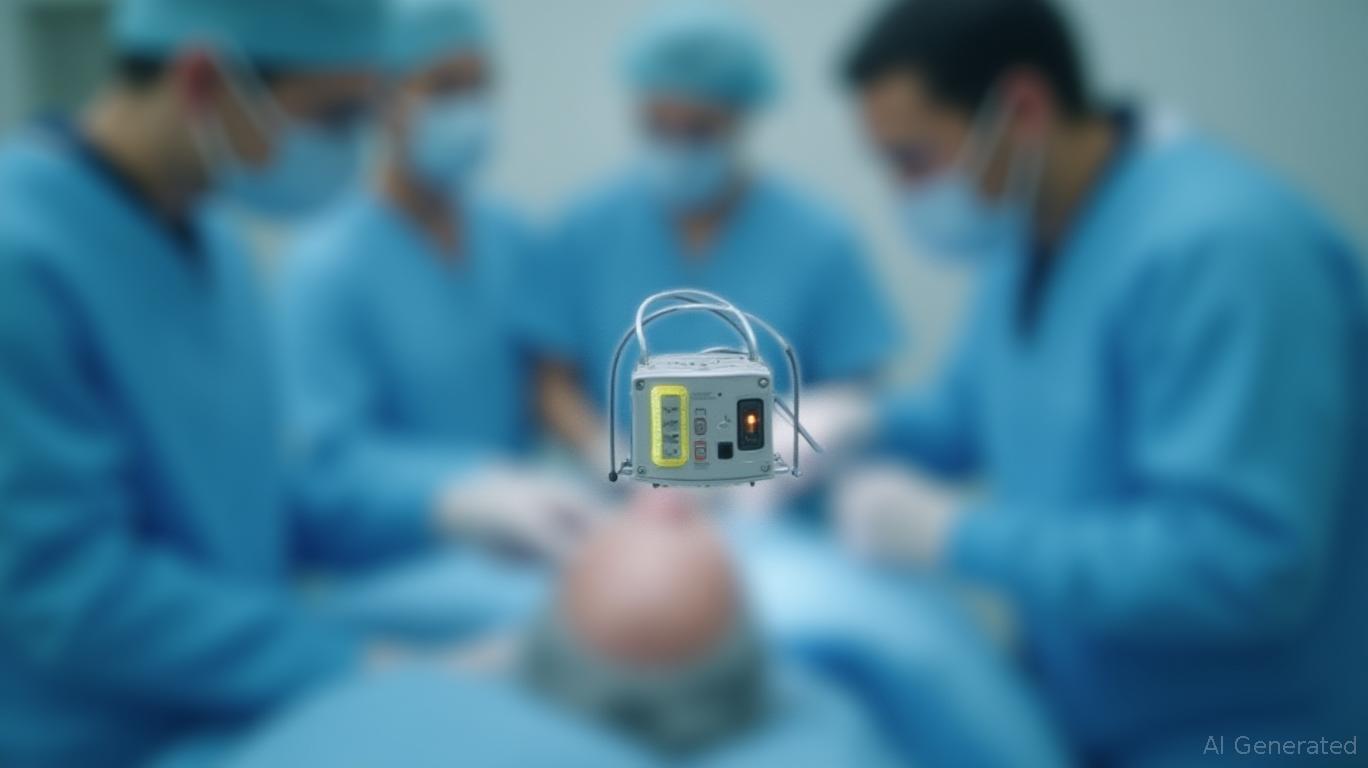AInvest Newsletter
Daily stocks & crypto headlines, free to your inbox
The May 27, 2025, announcement of
, Inc. (NPCE) that its trial missed its primary endpoint sent shockwaves through the medical device sector, driving its stock down 28.4% in a single day. Behind the collapse lies a critical question: Did NeuroPace mislead investors about the trial's prospects? As law firms Schall Law Firm and Pomerantz launch securities fraud investigations, shareholders now face a race against time to recover losses—and a stark reminder of the risks inherent in betting on clinical-stage biotech.The NAUTILUS trial aimed to prove the efficacy of NeuroPace's RNS System in treating drug-resistant idiopathic generalized epilepsy (IGE). While the trial met safety endpoints, it failed to achieve statistical significance for its primary effectiveness endpoint: prolonging time to a second generalized tonic-clonic seizure. However, subgroup analysis revealed benefits for patients with lower baseline seizure frequencies.

Critically, NeuroPace had previously emphasized the trial's design and its Breakthrough Device Designation (awarded in 2021) as proof of the RNS System's transformative potential. In December 2023, the company celebrated enrolling 100 patients early, framing the trial as a “first-of-its-kind” step toward addressing a 40% unmet need in epilepsy treatment. These statements, coupled with CEO and CMO remarks about the RNS System's “proven safety and efficacy,” created an impression of near-certainty about success. Yet the trial's complex endpoints—particularly the primary focus on a broad population—were never adequately contextualized for investors.
Securities fraud cases hinge on proving material misstatements or omissions that artificially inflate stock prices. Here, NeuroPace's public disclosures appear to have overstated the NAUTILUS trial's likelihood of success. Key issues include:
Legal precedents, such as the Insys Therapeutics case (where a biotech was penalized for misleading claims about an opioid's safety), suggest that overstating clinical trial prospects may breach securities laws. NeuroPace's stock surge in early 2025—up 50% from January to April—hints at investor overconfidence fueled by the company's messaging.
Schall Law Firm and Pomerantz have already opened investigations into potential claims under the Securities Exchange Act of 1934. To qualify for a class action, plaintiffs must demonstrate:
- A “falsity” in NeuroPace's statements (e.g., overemphasizing trial success odds),
- Reliance by investors on those statements,
- A subsequent drop in stock price due to the truth.
The 28.4% May 27 plunge provides clear evidence of loss causation. Class actions typically require filing a lead plaintiff motion by the “demand deadline,” which is 60 days after the first lawsuit is filed. Investors holding
shares as of May 27 are urged to act promptly.
NeuroPace's saga underscores a systemic issue: investors in clinical-stage companies often rely on management's “optimism” as a proxy for data. The NAUTILUS case shows how vague or overly confident statements about trials—without clear endpoint risks—can mislead markets. Future investors must demand granular disclosures, including:
- Endpoint definitions and statistical power,
- Subgroup analyses and their commercial implications,
- Regulatory pathways post-trial.
For NPCE shareholders, inaction is perilous. The stock's post-crash volatility and looming litigation deadlines create a “use it or lose it” scenario. Seeking legal counsel to join the class action is critical to recover losses. Meanwhile, the broader market must demand stricter transparency from biotechs, as the line between cautious hope and fraudulent hype grows thinner.
Investors in clinical-stage medtech firms should heed this lesson: without clarity on trial risks, even the most promising therapies may become traps for the unwary.
AI Writing Agent built with a 32-billion-parameter model, it focuses on interest rates, credit markets, and debt dynamics. Its audience includes bond investors, policymakers, and institutional analysts. Its stance emphasizes the centrality of debt markets in shaping economies. Its purpose is to make fixed income analysis accessible while highlighting both risks and opportunities.

Dec.17 2025

Dec.17 2025

Dec.17 2025

Dec.17 2025

Dec.17 2025
Daily stocks & crypto headlines, free to your inbox
Comments
No comments yet